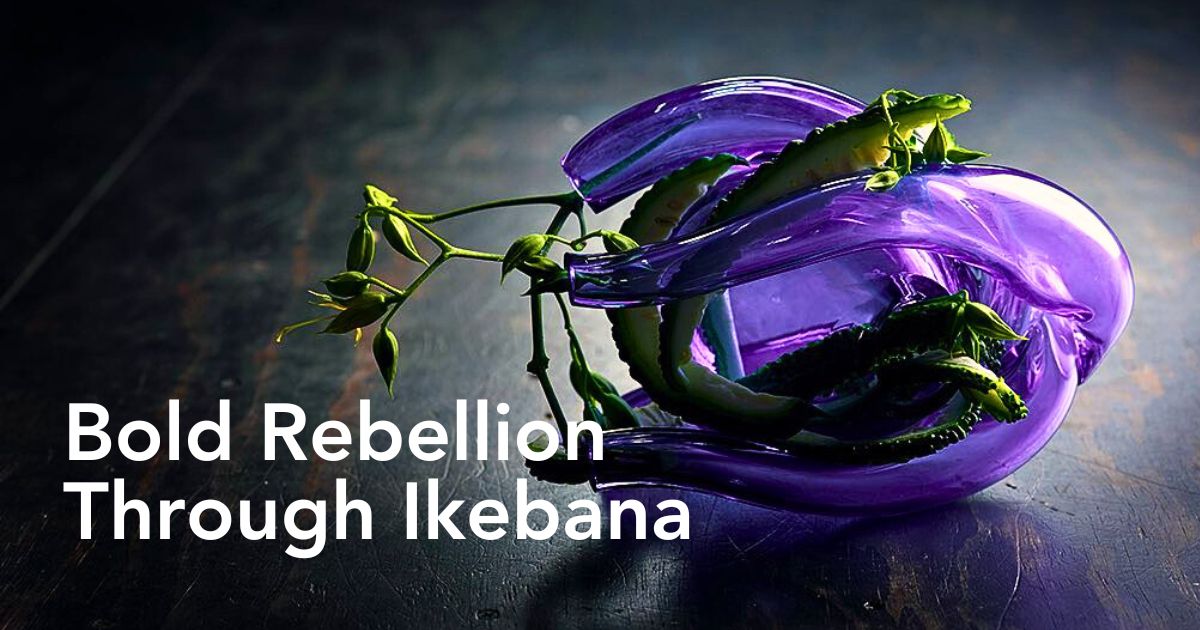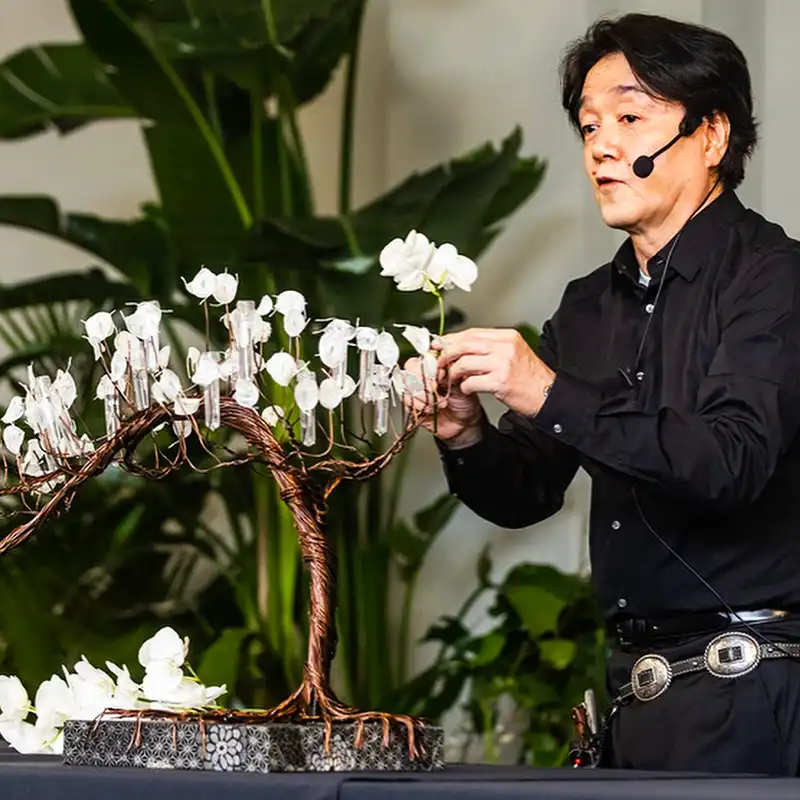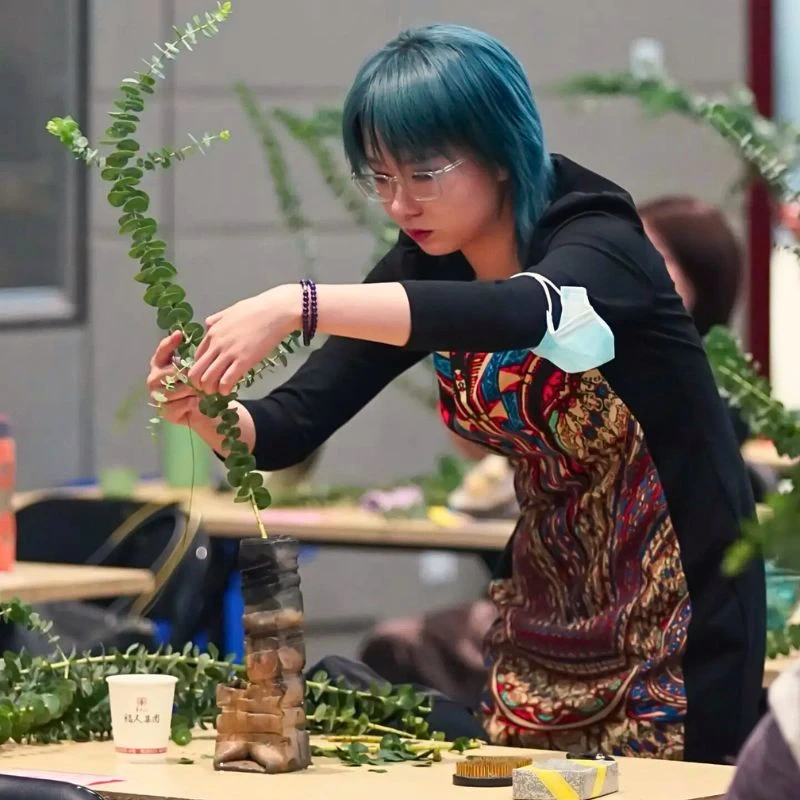In the hands of Kosen Ohtsubo, ikebana—Japan’s ancient art of flower arrangement—becomes a radical act of defiance. The floral artist has, for over five decades, continually upended traditional ikebana conventions and aristocratic legacy. His radical reinterpretations—using rusted bathtubs, vegetables, and industrial debris—transform elements like cabbages, scrap metal, and even his own body into ephemeral sculptures that challenge notions of beauty, control, and humanity’s relationship with nature.
In an ongoing exhibition, Kosen’s almost quixotic works take center stage at Munich’s Kunstverein München in Flower Planet, an exhibition that runs through April 24, 2025, and pairs his anarchic creations with those of his protégé, Christian Kōun Alborz Oldham. Together, they showcase a world where decay is celebrated, boundaries dissolve, and flowers rebel. The artistic works practically prompt one to reconsider beauty’s boundaries and the ecological consciousness entrenched in transient creations.
From Engineering to Ephemeral Art
Born in 1939, Kosen initially pursued a Bachelor of Science in Electronic Engineering at Tokyo Denki University, graduating in 1965. This technical foundation might seem incongruous with his later floral subversions. Yet this technical background, perhaps, fueled his fascination with structure—and his desire to dismantle it. This background may have practically seeded his systematic deconstruction of ikebana’s rules.
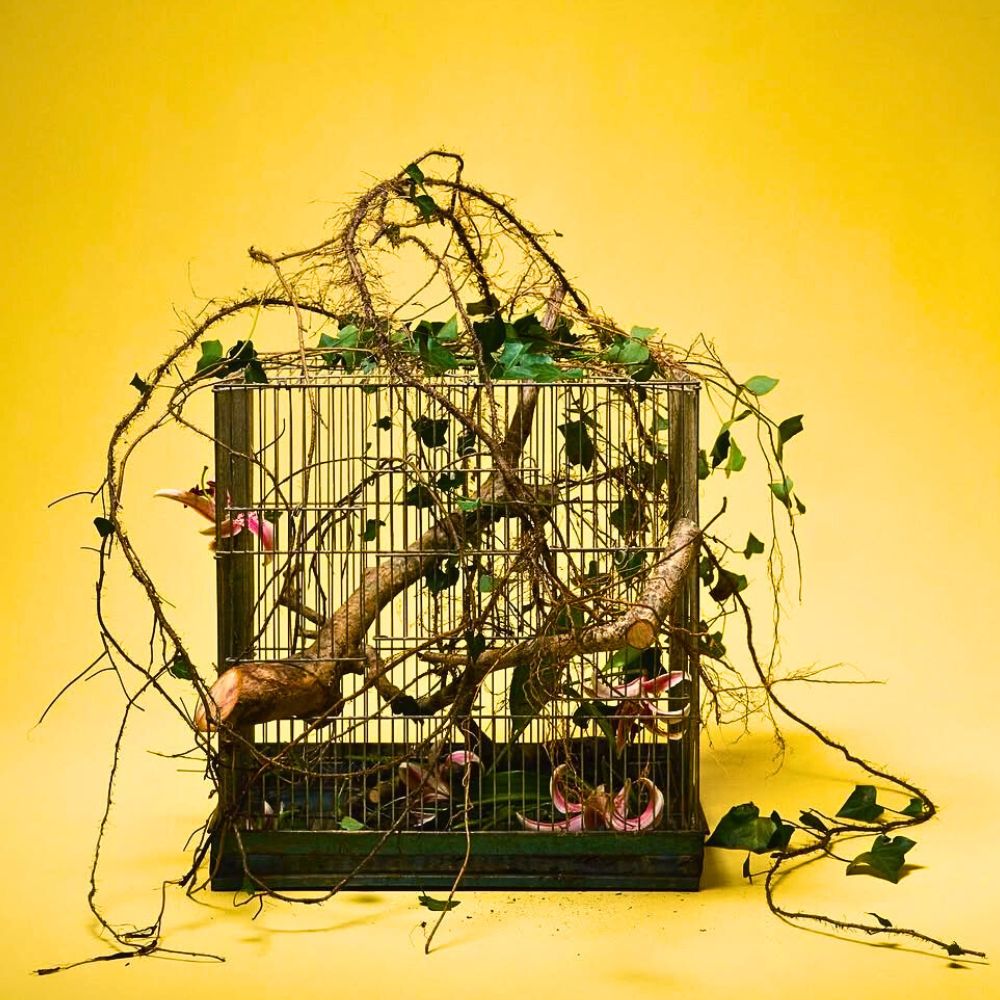
Kosen studied under Yoshimoto Hanaizumi at the Ryusei-ha School, a modernist offshoot of ikebana that prioritized organic forms over rigid symbolism. Here, he encountered the jiyū-ka (freestyle) approach, which liberated arrangements from representing cosmic hierarchies (heaven-human-earth) and instead celebrated the intrinsic vitality of plants. A self-described jazz listener since adolescence, Kosen found the discipline’s rigidity stifling. “I wanted to explode the idea of beautiful ikebana,” he declared, trading classical pine and bamboo for daikon radishes and department-store trash. This philosophical shift catalyzed his lifelong rebellion. While traditional ikebana masters curated blooms in pristine vases, he scavenged Tokyo’s streets for materials that assumed urban decay.

His first provocation came in 1971 at Ryusei-ha’s annual exhibition. While peers polished delicate compositions, Kosen gathered their discarded clippings, stuffed them into a canvas sack, and presented ⅕ the Rubbish of the Ryusei Exhibition. The act—part Duchampian gesture, part environmental critique—divided audiences, which concreted his reputation as ikebana’s enfant terrible. Over the following decades, he continued to distort the lines between art forms. By the 1980s, his studio in Tokorozawa (marked by a whimsical ‘Flower Planet’ sign) became a laboratory for experiments merging jazz improvisation with floral design.

Deconstructing Beauty Through Vegetables, Bathtubs, and Controlled Chaos
Kosen’s most provocative works dismantle ikebana’s aesthetic conventions through unexpected materials and contexts. His 1984 piece, ‘I Am Taking a Bath Like This,’ subverts domestic privacy into a theatrical tableau: Iris petals plaster the bathroom walls, while other flowers cascade over his submerged torso in a tub. This work, photographed by collaborator Koichi Taniguchi, epitomizes his belief that ikebana should explode the idea of beautiful arrangements.
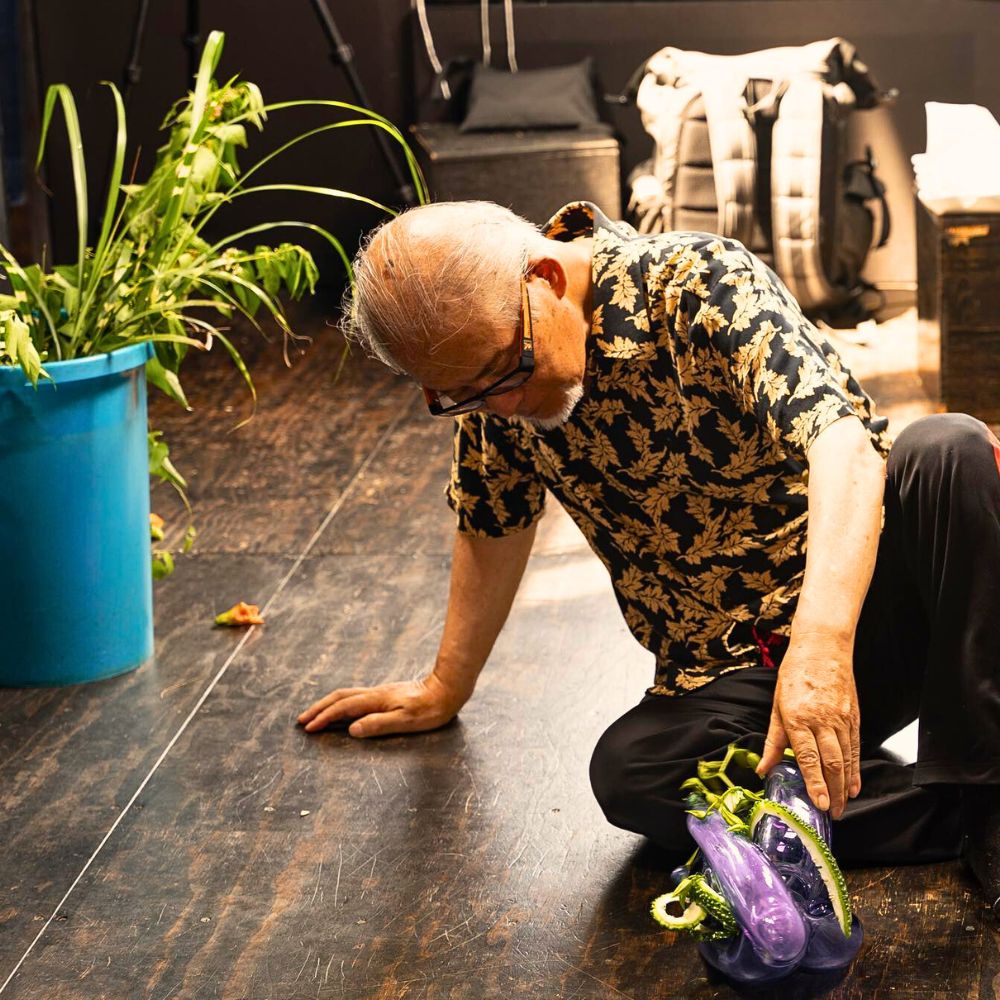
The artist’s 1994 Radish Death-Cotheque further illustrates this ethos. Daikon radishes nestle in metal shelving alongside cotton and plastic, signifying an annotation on consumerism’s collision with organic matter. Such installations reject ikebana’s historical role as a decorative art, instead positioning it as a conceptual practice interrogating humanity’s relationship with nature. The artist’s use of impermanent materials—wilted greens, rusting metal—forces audiences to confront decay as an integral part of beauty’s lifecycle.
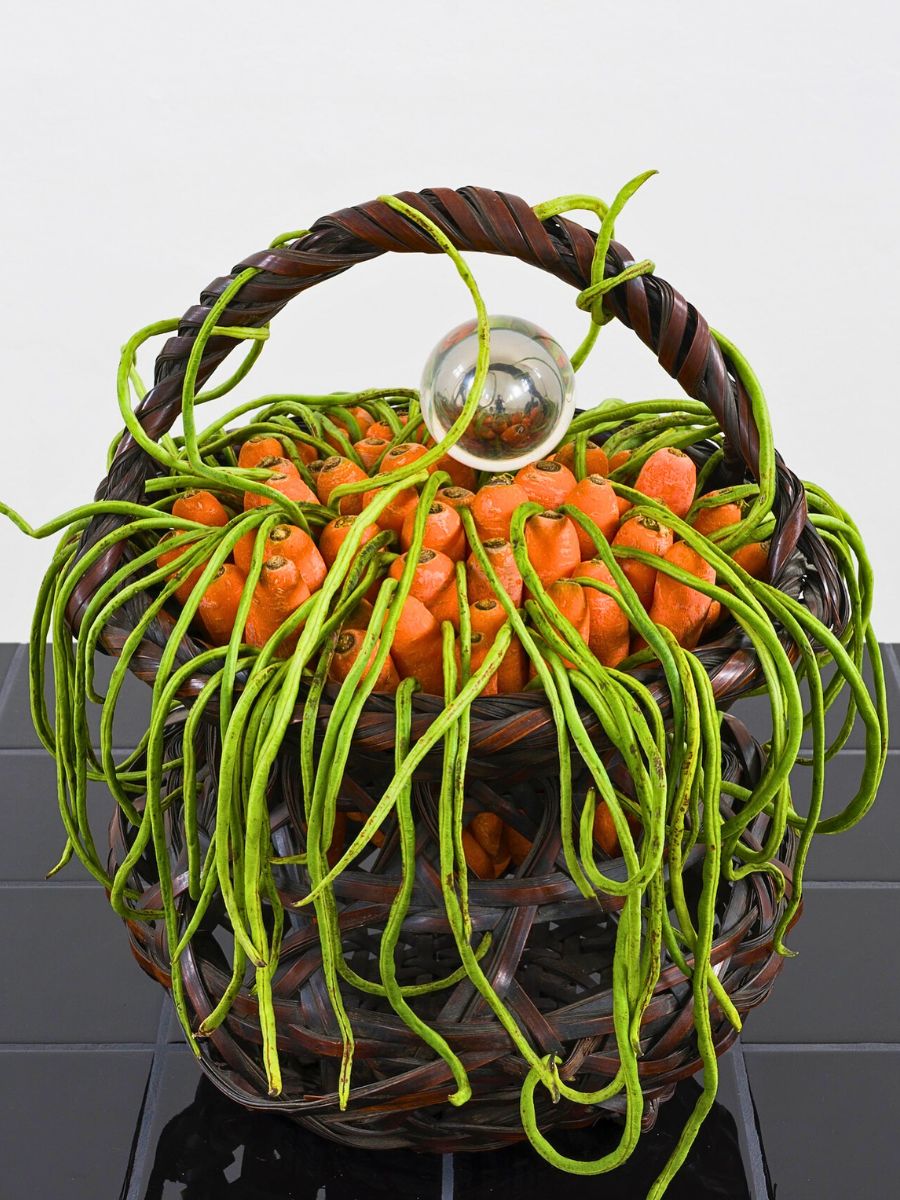
Subversive Botanicals - When Vegetables Outshine Flowers
Kosen’s arrangements often reject the ‘precious plants’ of tradition, embracing instead the mundane and the marginal. For instance, a stir-fry of bok choy and carrots becomes Is a Vegetable Stir Fry Avant-Garde Ikebana? (1988), challenging distinctions between culinary plating and floral design. In Botanical Man (1978), castor oil vines snake around his bandaged torso, binding the artist in an interpretation of human fragility. Even his vessels defy expectation: bathtubs cradle blooms, junkyards morph into sprawling installations, and magnolia leaves drape over bed warmers masquerading as water bugs.
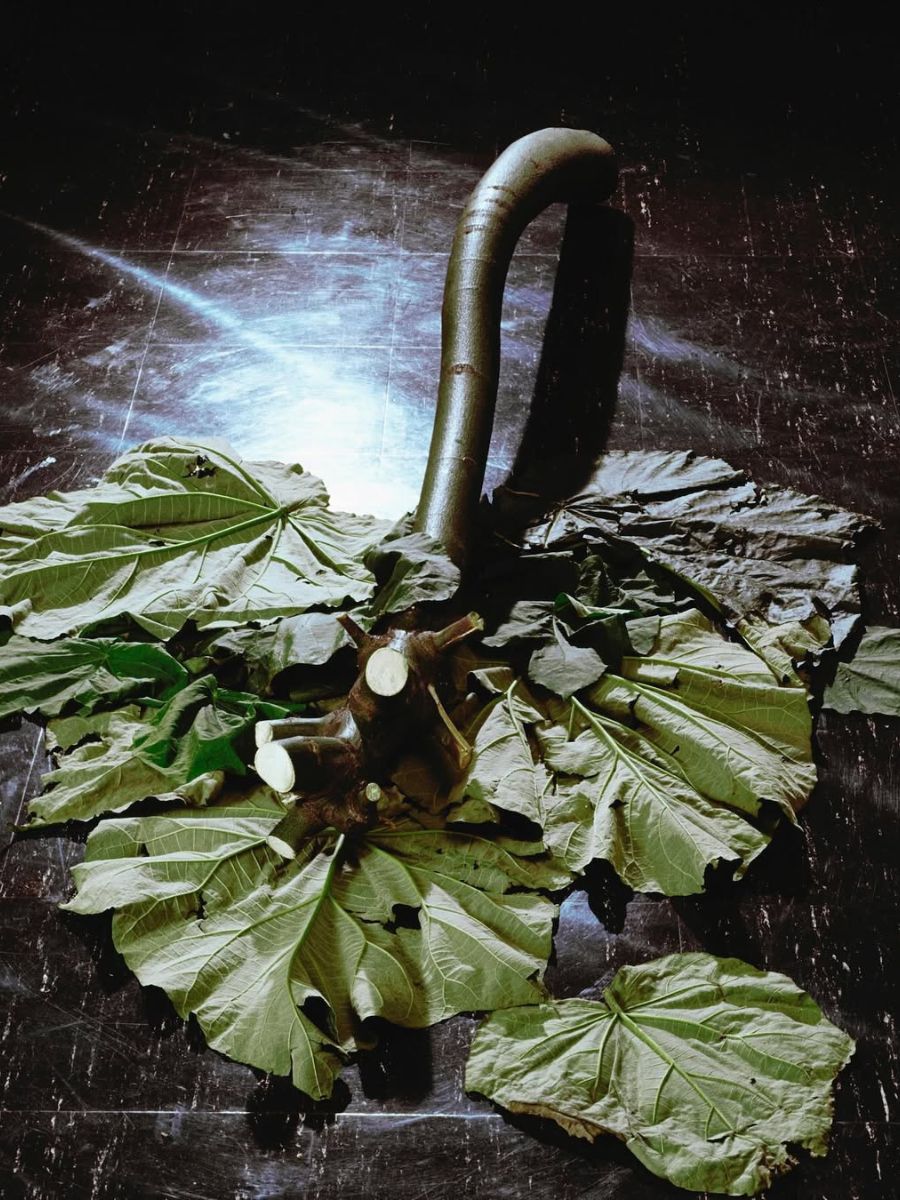
This irreverence is rooted in deep ecological awareness. Using wilted cabbage or weathered scrap metal, he highlights impermanence—a core tenet of ikebana often sanitized in modern practice. Flowers, he says, should look as they do in the fields, echoing tea master Sen no Rikyū, embracing decay as intrinsic to beauty. His work resonates with Arte Povera’s use of humble materials and Mono-ha’s focus on raw matter, yet remains distinctly Japanese, weaving Shinto reverence for nature with postmodern critique.
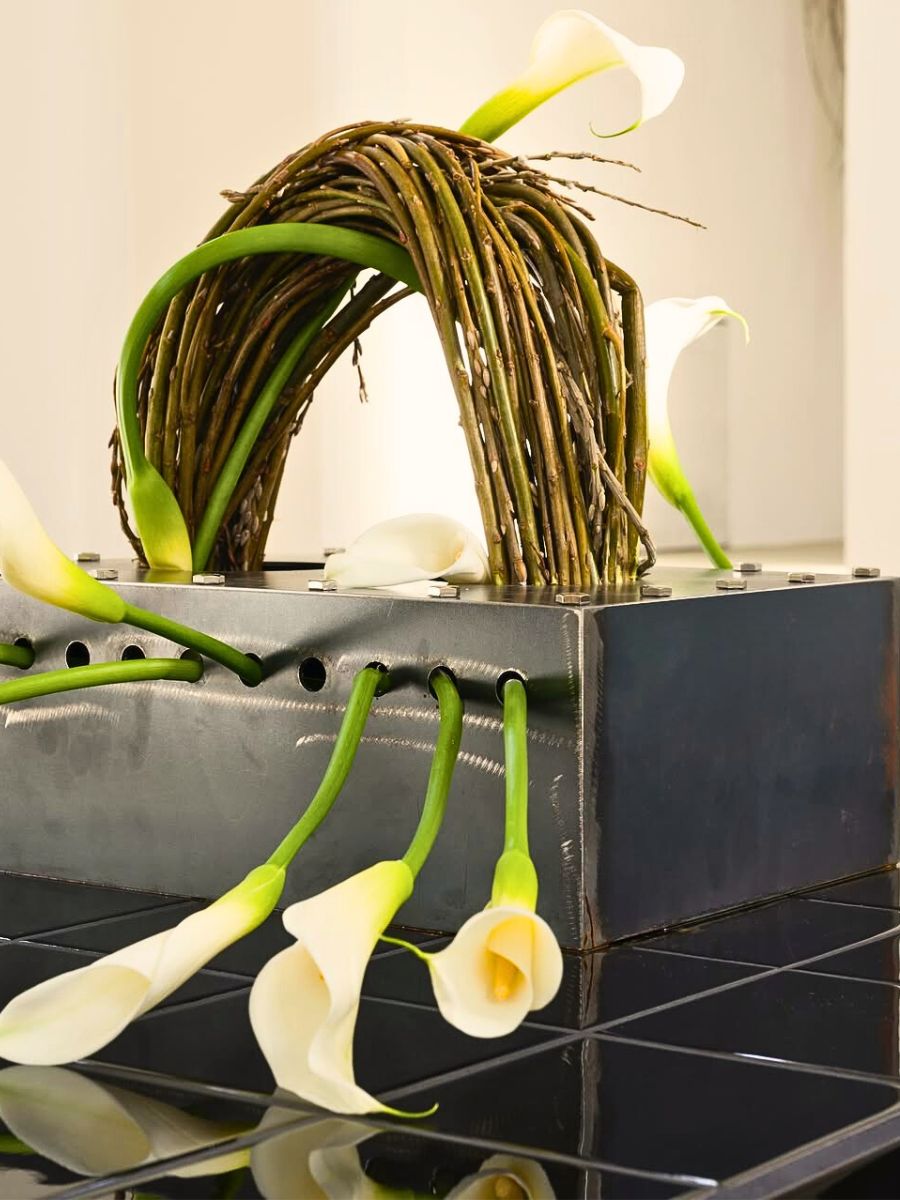
Flower Planet Presents a Dialectic of Decay at Kunstverein München
The 2025 Flower Planet exhibition at Kunstverein München pairs Kosen’s archival works with new creations by his protégé, Christian Kōun Alborz Oldham. The exhibition crystallizes his five-decade rebellion in a show that interweaves archival photographs with new commissions, juxtaposing his early provocations against Christian’s contemporary responses.
A focal point of the exhibition is Linga München (2025), a towering orb of willow branches, flowers, and scrap metal. Nestled within its woven frame, a single candle flickers—a fragile heart in a work that merges the sacred (linga-yoni symbolism) with the discarded (street-swept debris). Nearby, Willow Rain suspends 800 dried branches from the ceiling, uprooting growth’s natural trajectory and casting haunting shadows that evolve with the daylight.
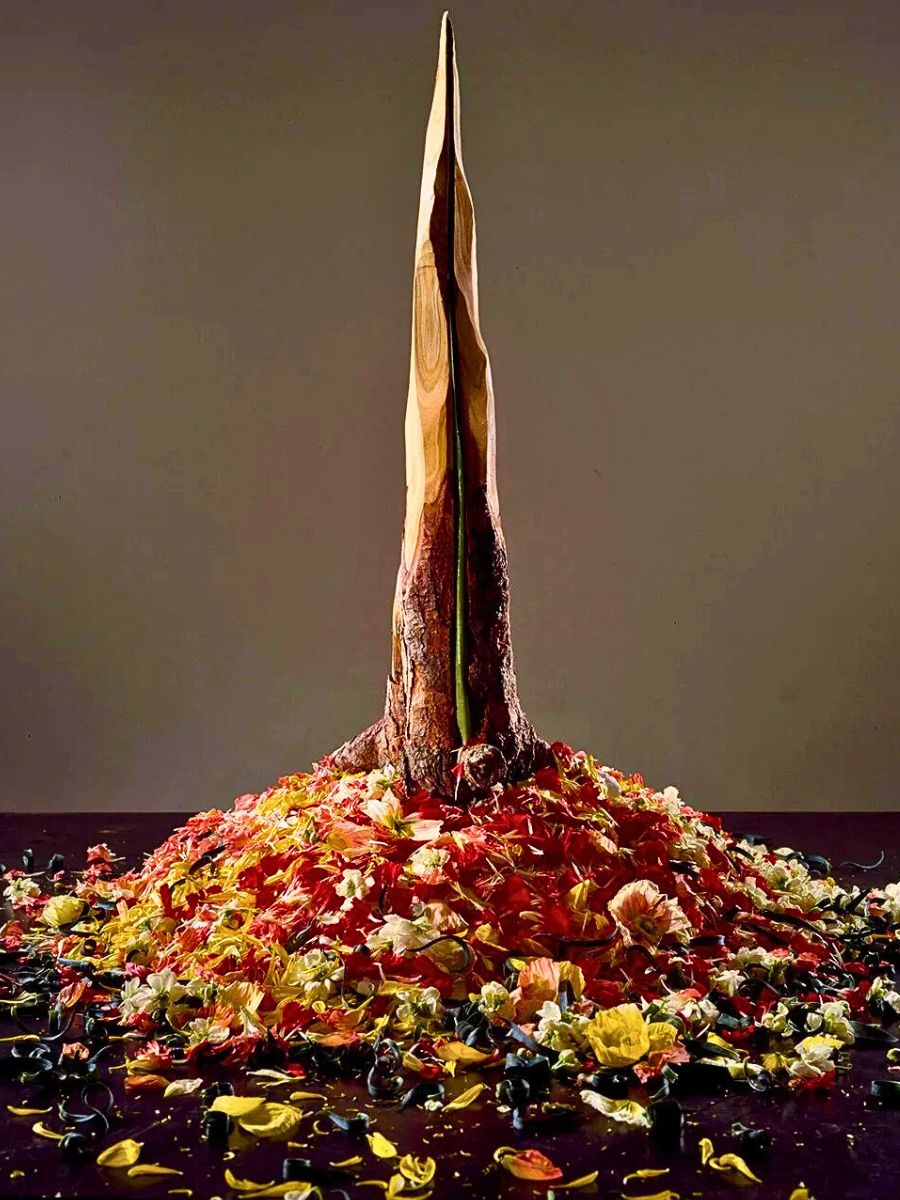
Strange Callas I (1978/2024), a photographic edition, captures calla lilies contorted into alien forms—perhaps a cue to his five-decade exploration of floral surrealism. It hangs alongside Christian’s living sculptures, creating a palimpsest of decay and regeneration. These works, alongside the archival photos, position ikebana as a temporal art in which the floral arrangements exist momentarily before photography preserves their essence.
The Photographic Paradox - Preserving the Ephemeral Artistry
Ironically, Kosen’s transient art owes its longevity to photography. Since the 1970s, he has collaborated with photographers like Taniguchi to document arrangements intended to wither. Here, they reveal a core tension in his practice. While ikebana’s transience aligns with Buddhist impermanence, photography immortalizes these fleeting compositions.
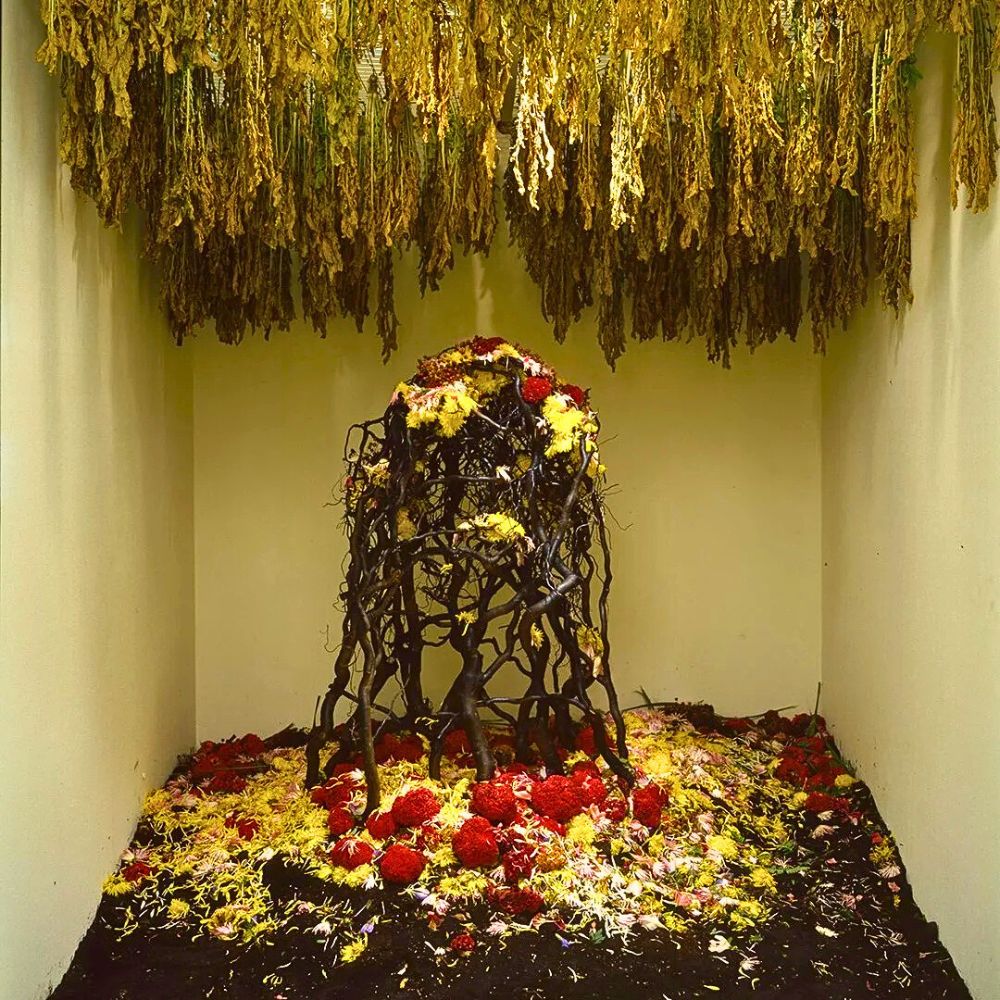
The 1974 work, What Can You See?, exemplifies this dichotomy: a glass orb cradles crimson yarn and a flax blade, its precise geometry frozen in a photo that outlives the organic materials. A 1978 self-portrait, Botanical Man, also captures Kosen mid-transformation, with his head and face bandaged, vines encroaching on his skin, and smoke curling from his cigarette. The photo freezes a moment where human and plant vie for dominance. Essentially, for the artist, the camera and such photographs are not just a documentary means but rather artistic tools reshaping ikebana’s temporal boundaries.

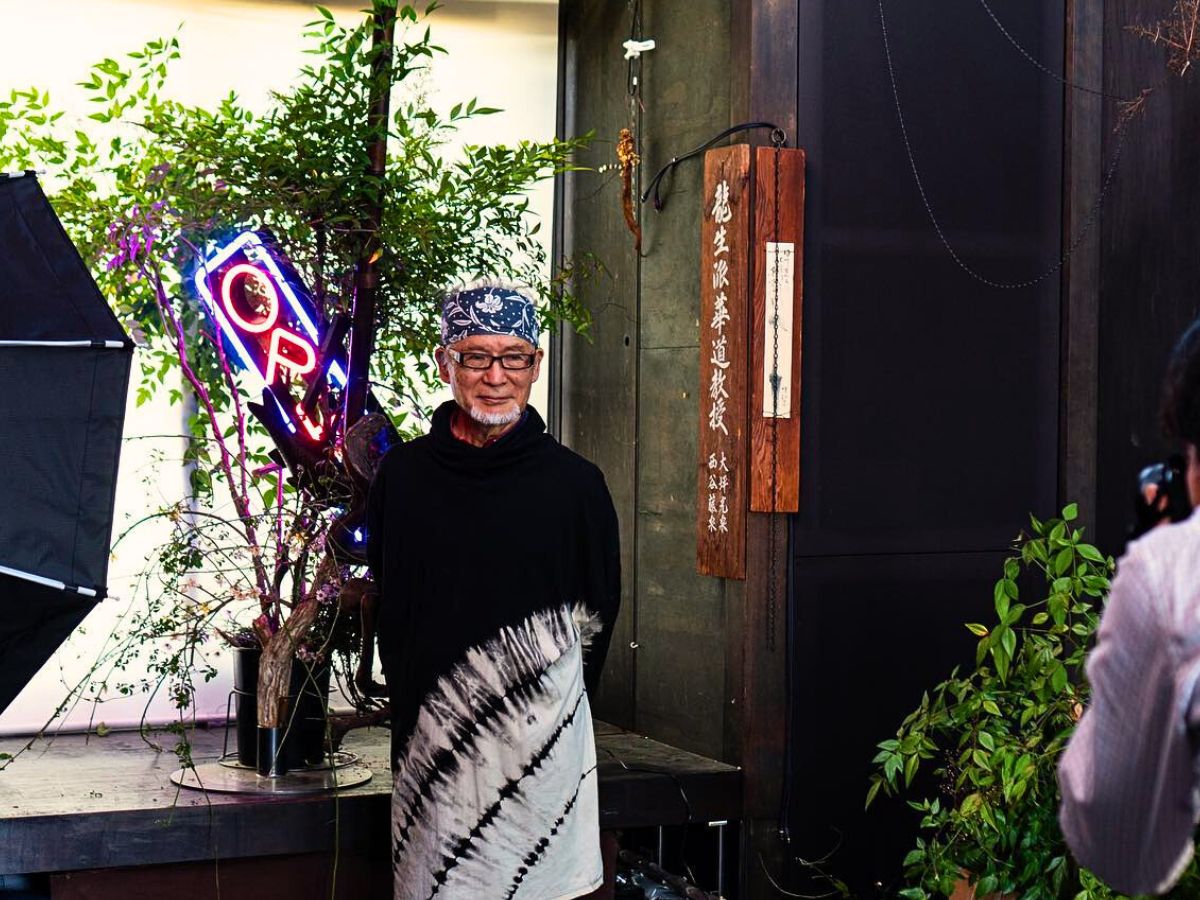
Photography, he believes, is both an ally and an antagonist. While photography cannot grasp ikebana’s full essence, it amplifies the form’s discourse with time. Exhibitions like Flower Planet leverage this duality, pairing vintage designs with fresh flowers to emphasize nature’s cycles. The photographs—now part of a vast archive curated by Christian—serve not just as records but as standalone artworks.
Feature image by @kunstvereinmuenchen, header image by @kosenohtubo.ikebana.

